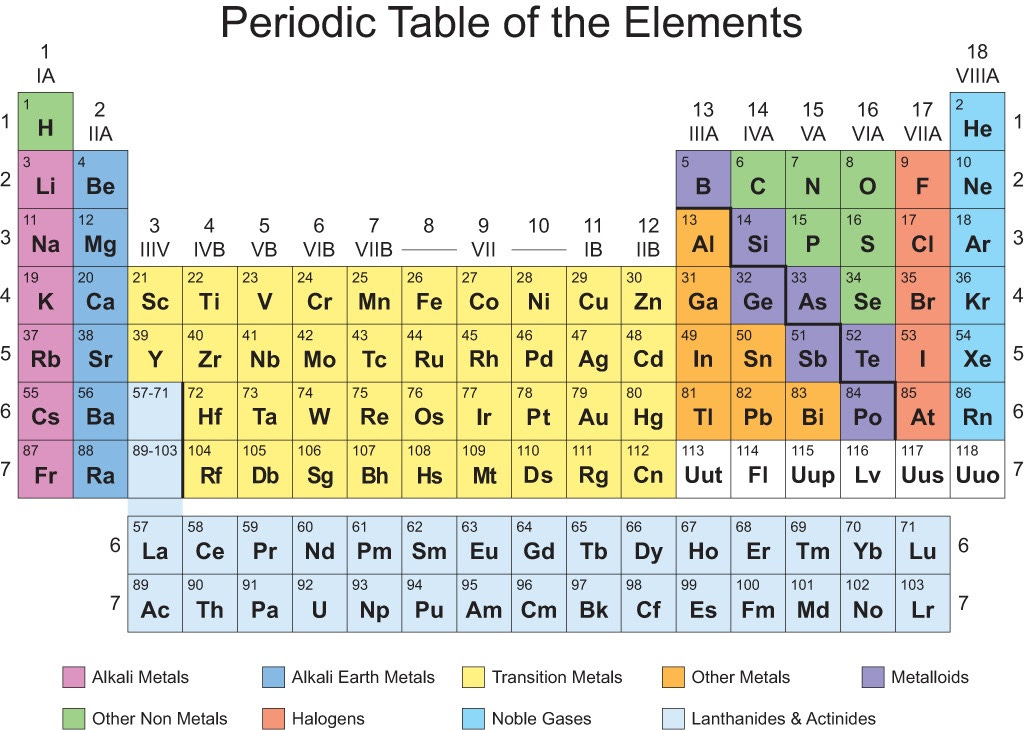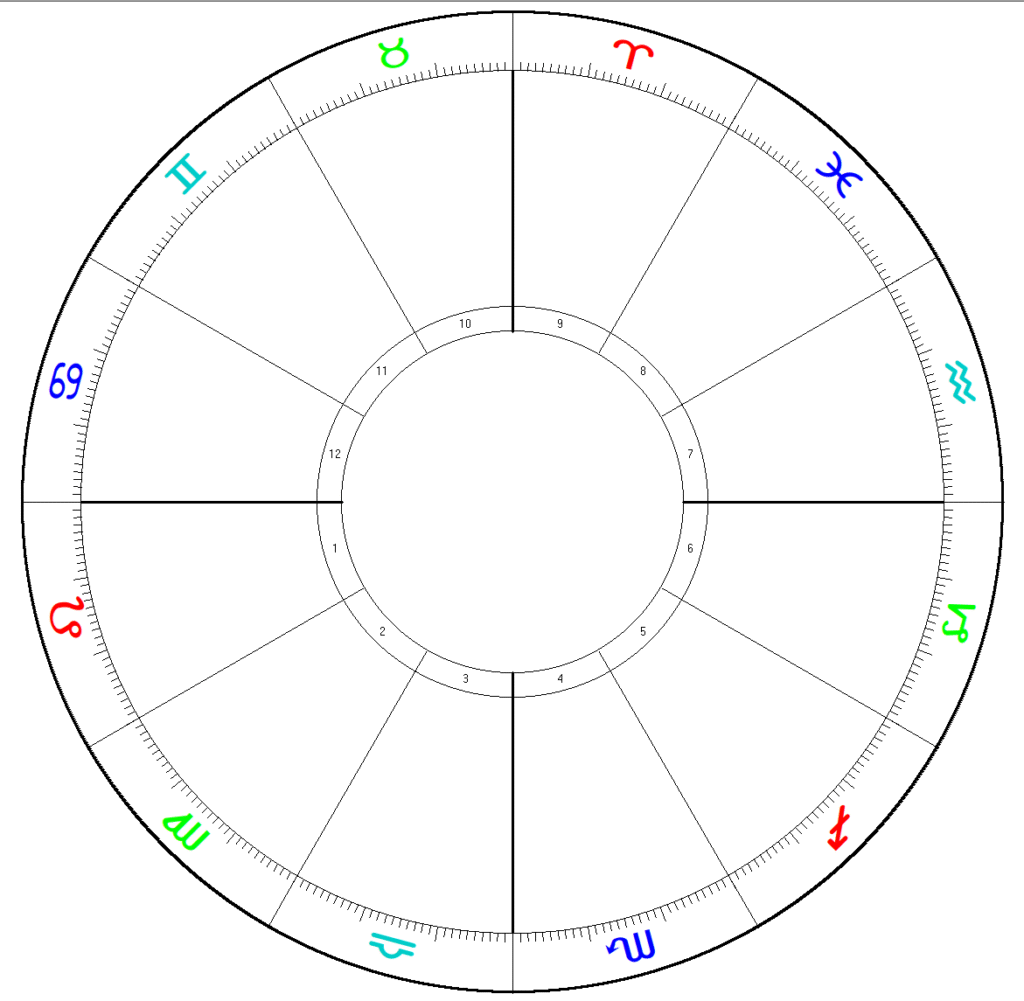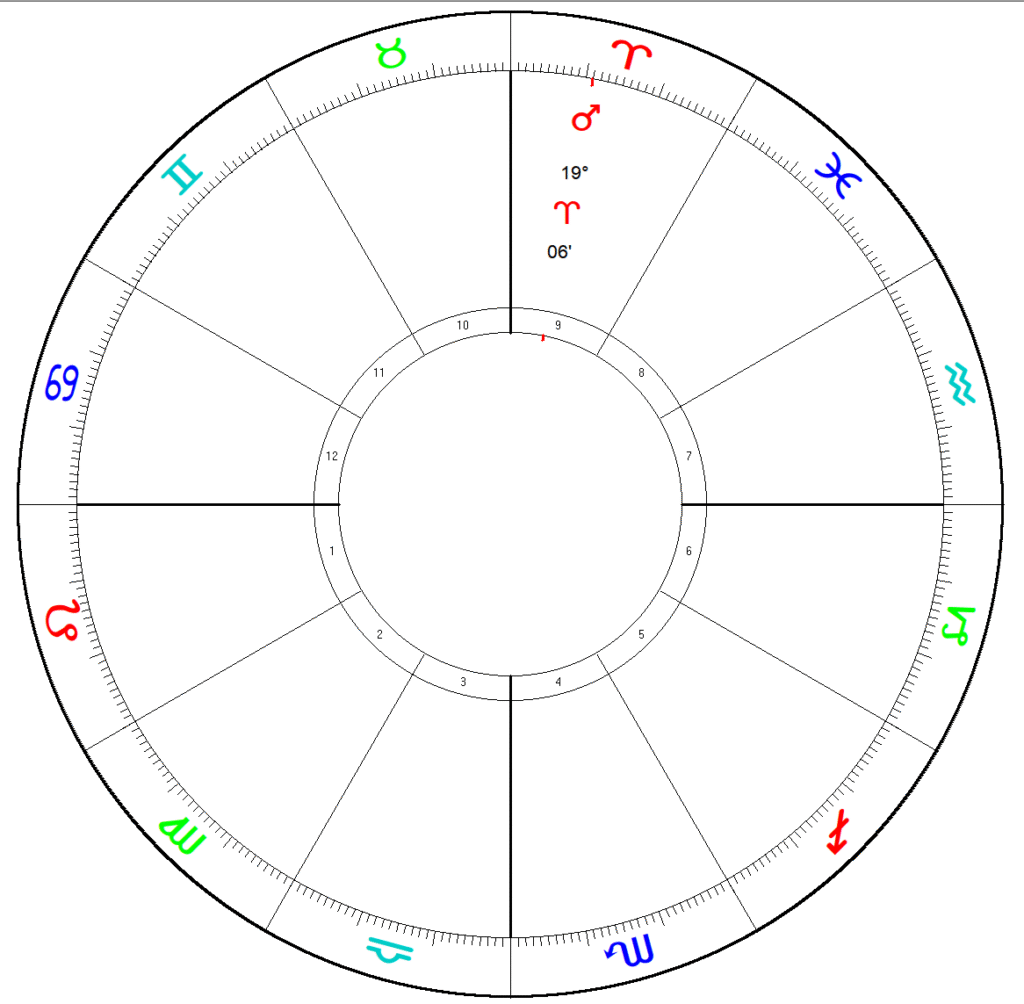Part 2 of the Chemistry of Time
The astrological system is based upon the interactions of two sets of elements – one we will call terrain elements, and the other active elements. The active elements pass through the terrain elements, which alters the strength and effectiveness of the active element. In addition, active elements interact with each other, and it is these core interactions which produce results.
Consider the science of Chemistry, and its foundational document, the Periodic Table of Elements:

In Chemistry, an element is a substance that cannot be broken down into another substance. These elements /are what they are/ and everything else is the product of a combination of elements. Take water – it is a substance but not an element – it is built by combing two elements in a particular combination which when mixed produce the substance we call water. Hydrogen is an element, as is Oxygen. You take two Hydrogen and one Oxygen (H20) and out comes water. Another substance is brass – it is formed by combining the elements of copper and zinc together. Why are water and brass so different from each other? They are different because the elements they are created from have different properties – hydrogen and oxygen behave in certain ways, according to their nature, while copper and zinc do the same. It is simply that these elements have very different properties. The study of elements has grouped them into assorted categories – metals, nonmetals, gas, noble gas, etc. What is important is that elements are a substance and when combined with other elements they produce other substances. The form of the substance that is produced by combining elements can be predicted by knowing the traits and properties of the elements. If you combine hydrogen and oxygen you know that the product is not going to be metal, whereas the opposite is true if you combine copper and zinc.
The astrological system works in a thematically similar way. The base elements of the system /are what they are/ and they each have known and defined properties and traits. Their interactions produce results which are predictable in form when we properly consider the elements that go into the combination. To begin with let’s explore the terrain elements – better known as the zodiacal signs.

The zodiac signs are assigned to regions of the sky and are named after old constellations, but they are not connected directly to them in any way. The sky was divided into twelve even sections and to aid in identifying them on sight they were given names. These names varied across cultures and time and it didn’t matter what they were so long as everyone communicating about locations in the sky agreed upon the names. The names we use for the zodiac signs derive from this practice but the names that were settled upon are actually embedded with information about the element that is “located” in that part of the sky. These names are deeply meaningful because they are not merely names but rather symbols and to understand the properties and traits of the zodiacal sign “elements” one can use the symbol in addition to the core properties we will explain later. These symbols were chosen because they act as the embodiment of the nature of the zodiacal sign, acting as a sort of pure archetype from our world that seems to correspond with the sign itself and providing a reference for how the element behaves when it is acting upon the world.
There are twelve zodiac signs and they proceed in a set order as listed below. The signs and their corresponding symbolic name are:
Aries – the Ram
Taurus – the Bull
Gemini – the Twins
Cancer – the Crab
Leo – the Lion
Virgo – the Virgin
Libra – The Scales
Scorpio – The Scorpion
Sagittarius – The Archer
Capricorn – The Goat
Aquarius – The Water-bearer
Pisces – The Fishes
As the earth rotates on its axis through the day the sections of the sky rotate as well. In the summer at 1pm in New York City the section of the sky directly above head is likely to be Leo. As the hours pass Leo will shift toward the horizon while Virgo, the section of the sky which follows Leo, proceeds to the “top” of the sky. This continues all day and night and after the last section of the sky, Pisces, we get to where the first section, Aries, is at the top of the sky around dawn. Think of it as a simple ribbon making a full circle around the earth, divided into twelve sections. The sections of the sky are always divided in the same way, it is just that our perspective on the sky changes throughout each day. The relative position of a “sign” in the sky at a given time is known as a “House” and we will discuss that at length later.
A foundational principal in astrology is that the section of the sky matters because different sections of the sky have different properties. They are terrain and each has different and unique properties (these properties are a combination of four kinds of traits which are shuffled uniquely for each sign, but we’ll get into that later).
The terrain stays in place but has great influence upon the planets – these are the active elements. The planets are the handful of stars in the sky that “wander” rather than stay fixed, and they move in consistent patterns and cycles. The planets also have unique and defined traits and are base elements like the signs, but with different properties. It is known that planets have a mode of action and that this mode of action varies by power and effectiveness depending upon which terrain it is passing through in the sky. Additionally, the planets respond to being combined with other planets and these combinations are indicated by geometric relationships known as the “Aspects” (the mechanisms involved will be discussed later).
There are seven core “planet” elements in the astrological system:
The Sun
The Moon
Mercury
Venus
Mars
Jupiter
Saturn
There are additional objects and points in the sky which can also be considered to be elements, but with some differing traits and properties. These include Uranus, Neptune, and Pluto, as well as the North and South “nodes” of the Moon. Nearly all objects in the sky which move (including the “fixed” stars) are active elements but their significance is less important. Systematically it is only the seven core planets that have elemental properties fundamental to the core system. We’ll discuss these other objects later.

Similar to how we describe chemical combinations using their element names and their quantities, astrology focuses on combinations of elements and their locations. In the above chart I have hidden everything from view except the planet Mars, which is in the sign of Aries at 19 degrees. This means that the active element of Mars is interacting with the terrain element of Aries and that we can expect certain substantial results from this combination. This is because we know the properties of both Aries and Mars and have data on how they respond when they are interacting. Importantly, Mars “in” Aries behaves consistently each time it occurs (approximately every two years). The results of this interaction, know as a “transit,” are defined by a known set of traits of both Mars and Aries – these do not change and are systematically defined in contrast with the other sign and planet elements. Astrology tells us to expect notable and measurable similarities in the nature of the times when these two elements are interacting. Each time Mars is in Aries we know that things Mars is responsible for will result in ways indicated by the traits of Aries, which it is combining with. Note that at all times Mars exists – it is an element that is always working upon the time it just varies in its expression depending upon which section of the terrain it is interacting with. Similarly, Aries also exists at all times, and the nature of its terrain varies depending upon which elements are interacting with it. This is the basic principal of the astrological system and as it happens you already accept that this is the case and have lived your entire life under this premise, as we will explore next.

Leave a Reply